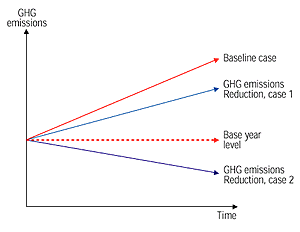
Figure 7.4: Baseline cases and target setting for GHG emissions reduction.
 Figure 7.4: Baseline cases and target setting for GHG emissions reduction. |
The choice of targets and timing affects cost estimates. Emission reduction targets are related to baseline case assumptions, and can be defined in relation to a given base year, or in relation to expected future development trends. Targets defined relative to base-year levels are accurate in terms of the target for the future total GHG emissions, but the actual GHG emissions reduction effort that is required is uncertain because future emission levels are unknown. Reduction targets defined as percentage reductions of future GHG emissions create uncertainty as to the GHG emission levels.
Figure 7.4 illustrates the different target-setting principles. Target setting related to base-year emissions compares the GHG emissions level in the “dotted” line base-year emissions and GHG emissions reduction case 2. In contrast, target setting in relation to future GHG emissions compares the baseline case line and GHG emission reduction case 1.
Climate change damages are related to the accumulated stock of atmospheric GHG concentrations. As such, target setting for GHG reduction policies should reflect the long atmospheric lifetime of the gases. What matters is the accumulated GHG emissions over several decades and the “technically correct” GHG reduction targets imply that the targets were defined for a given time horizon.
Target setting over the relevant time horizon involves a number of technical challenges. The time dimension of the emissions reduction should reflect the dynamic aspects, such as time and path dependence of emissions and climate change damages. In addition, the costs of climate protection depend on the “when” and “where” flexibility of specific emission targets. Many of these time dimensions have been considered in IAMs.
The time flexibility involves several issues addressed in top-down and bottom-up models. Assumptions about technological change are, as discussed in Section 7.3.4, critical in the studies, and follow a simple “rule” that technological change over time expands the range of available GHG emissions reduction options. Technological change lowers the mitigation costs for a long-term target relative to a short-term target. It is emphasized that the mitigation costs and future technological change depend on GHG emissions reduction policies initiated and planned over the short- and long-term horizons. This reflects the point that technological change itself relates to R&D programmes and to current technology implementation.
The timing of mitigation policies also affects transition costs. From a short-term perspective, mitigation is constrained by the existing capital stock, infrastructure, and institutional structure related to technology. One key cost-determinant during the transition period is the turnover of capital stock. A time profile for mitigation that requires early retirement of capital stock increases the costs of achieving any target. This is predominantly an issue for developed countries, in which the capital stock and infrastructure are well developed.
|
Other reports in this collection |